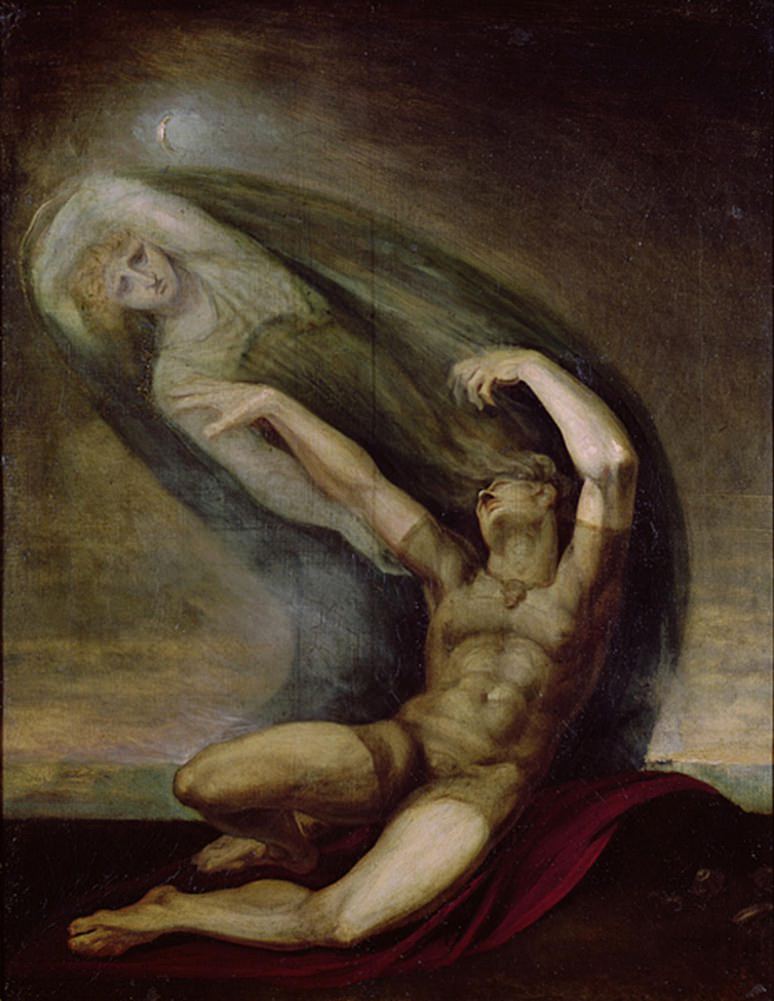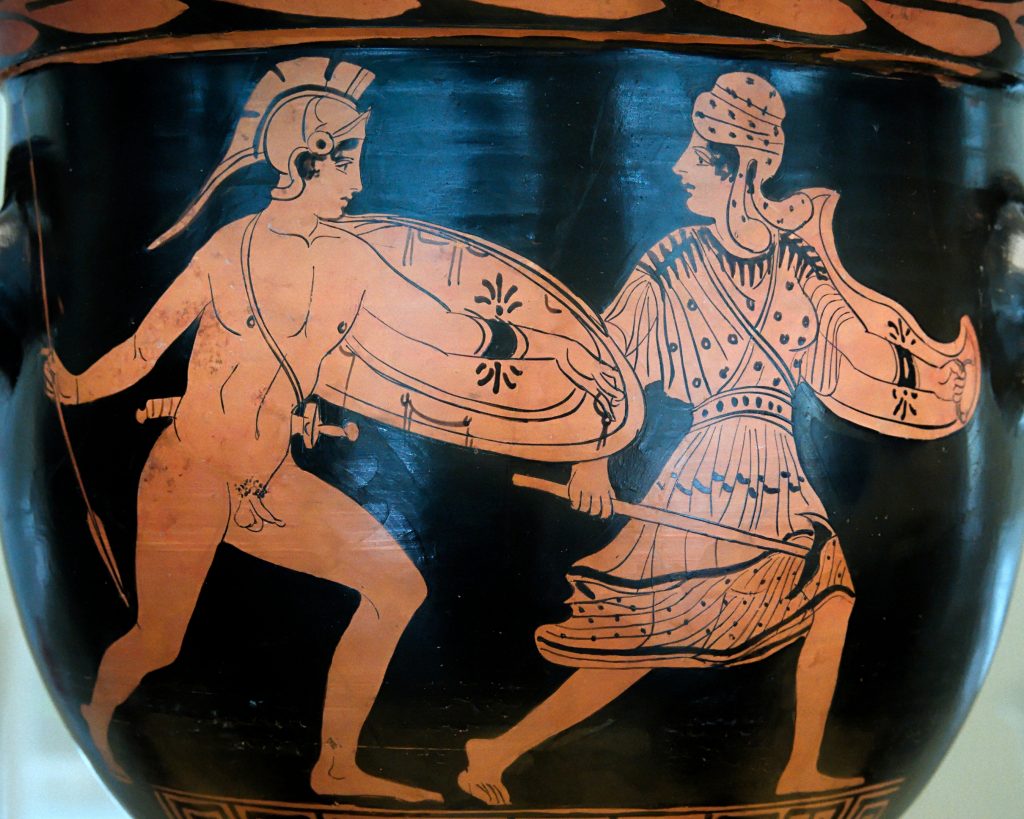Who really is Achilles? Is he just the son of lovely-haired Thetis who lets him be raised by Cheiron the Centaur, but comes to console and help him when he is devastated and even tried to hide him at the court of the King Lycomedes so that Achilles would not fight at Troy.
Is he just an angry and violent young man with a rage that goes beyond reason? Is he a ransacker of cities, who captured beautiful Briseis and loved her? Is he a lost soul after the death of his beloved therapōn, Patroklos, mourning by the ships of his companions the Myrmidons? Is he indeed the best of the Achaeans or is he just the bloodthirsty warrior, who kills Hector, the prince of the Trojans, and then drags him behind his chariot, but in the end is able to make peace with Hector’s father, Priam? Is he also the ideal bridegroom as in the poetry of Sappho, or as we hear about him playing the lyre in his shelter, or learning how to play with Cheiron? Is he the warrior falling in love with the Amazon Penthesileia as he is killing her? If we believe Plato: “Homer made Achilles the best man of those who went to Troy…Achilles is true and simple” (Plato Hippias Minor 364c and 365b, translation by Sententiae Antiquae).
In this Gallery you will see many different versions of Achilles, as we all have our personal image of who we want Achilles to be, thus artists let also their imagination create their own image of Achilles.
What about you? Please share in the Forum how you see Achilles, and share any images that illustrate this.
Image Credits
Detail from: Achilles and Chiron, sarcophagus 2nd half of the 3rd century CE. From the Via Casilina in Torraccia.
Photo: Jastrow, public domain, via Wikimedia Commons
Achilles playing the lyre with Cheiron. Roman fresco from Herculaneum, National Archaeological Museum of Naples, 1st century CE.
Public domain, via Wikimedia Commons
Achilles at Skyros. Roman mosaic, La Olmeda, Spain, 4th–5th centuries CE.
Public Domain, via Wikimedia Commons
Achilles at the court of King Lycomedes, panel of an Attic sarcophagus (240 CE) Louvre.
Photo: Kosmos Society
Achilles departing
Creative Commons Attribution 2.5 Generic via Wikimedia Commons
Achilles and Briseis, wall painting from Pompeii, 1st century CE
Photo: Marie-Lan Nguyen, public domain, via Wikimedia Commons
Giovanni Battista Tiepolo: The Rage of Achilles, 1757.
Public domain, via Wikimedia Commons
Attributed to Briseis Painter: Briseis being led away from Achilles. Side A, Red-figured kylix, c 480 BCE. British Museum.
Creative Commons Attribution-NonCommercial-ShareAlike 4.0 International (CC BY-NC-SA 4.0) license
© The Trustees of the British Museum
Achilles sitting wrapped in a himation. kylix, c 500 BCE.
Photo: Margareta Sjöblom 1988. Public domain, via Wikimedia Commons
Thetis consoles Achilles
Giovanni Battista Tiepolo: Thetis Consoling Achilles, 1757
Public domain, via Wikimedia Commons
Attributed to The Florence 3984 Painter: Embassy to Achilles, red figure kapis, 490–480 BCE.
Photo: Egisto Sani, Creative Commons Attribution-NonCommercial 2.0 Generic (CC BY-NC 2.0) via Flickr
Achilles tending to Patroklos. Tondo of Attic red-igure kylix, c 500 BCE.
Photo: Bibi Saint-Pol, public domain, via Wikimedia Commons
Giuseppe Cades: Achilles in his tent with Patroclus, Playing a Lyre, surprised by Ulysses and Nestor. c1782. Louvre, Shonagon
Public domain, via Wikimedia Commons
Achilles sacrificing to Zeus for Patroclus’ safe return. Image 47 of the Ambrosian Iliad, 5th or 6th century CE.
Public domain, via Wikimedia Commons
Hamilton, Gavin: Achilles Lamenting the Death of Patroclus. Out of copyright.
Photographer: Antonia Reeve, National Galleries of Scotland
Detail from Benjamin West: Thetis Bringing Armor to Achilles II. 1806
Public domain, via Wikimedia Commons
Peter Paul Rubens: Achilles slays Hector. c 1630–1635
Public domain, via Wikimedia Commons
Taillason, Jean Joseph. Achilles Displaying the Body of Hector at the Feet of Patroclus. 1769. Krannert Art Museum
Photo: Daderot, Creative Commons CC0 1.0 Universal Public Domain Dedication, via Wikimedia Commons
Henry Fuseli: Achilles Searching for the Shade of Patroclus. 1803.
Public domain via Wikimedia Commons
Achilles and Hector
Pietro Testa: Achilles Dragging the Body of Hector. c 1648–1650. From the British Museum.
Creative Commons Attribution-NonCommercial-ShareAlike 4.0 International (CC BY-NC-SA 4.0) license
© The Trustees of the British Museum
Théobald Chartran: Priam demandant à Achille le corps d’Hector. 1876. Petit Palais.
Photo: Kosmos Society
Creusa Painter: The battle of Achilles and Penthesileia, Lucanian red-figure bell-krater. late 5th century BCE.
Photo Marie-Lan Nguyen (User Jastrow), Creative Commons CC BY 2.5, via Wikimedia Commons
Thorvaldsen, Bertel. Achilles and Penthesileia, 1837.
Public domain, via Wikimedia Commons
Filippo Albacini (1777–1858). The Wounded Achilles. 1825. From The Devonshire Collections, Chatsworth.
Photo: Kosmos Society
___
Hélène Emeriaud is a Team member at HeroesX, a MOOC on edX. She studied ancient Greek at school in France and for several years at the University of Minnesota. She holds a degree in Education from Montreal University, and a Master of Education from McGill University. She is an active participant and member of the Editorial Team in the Kosmos Society with a particular interest in ancient Greek and Latin language learning.























